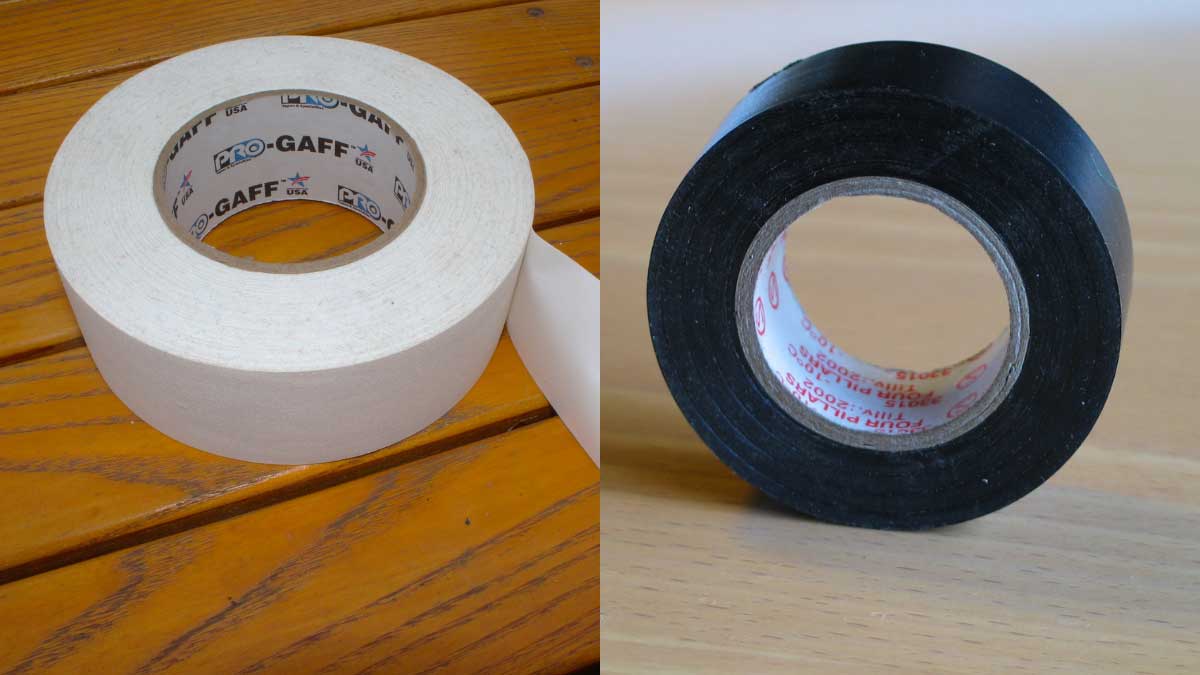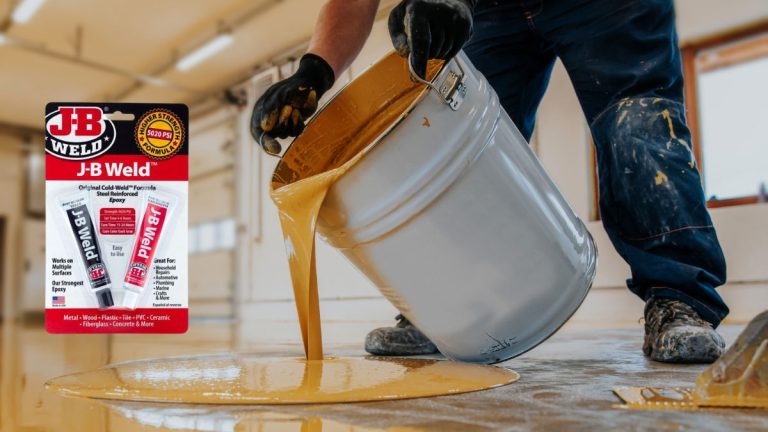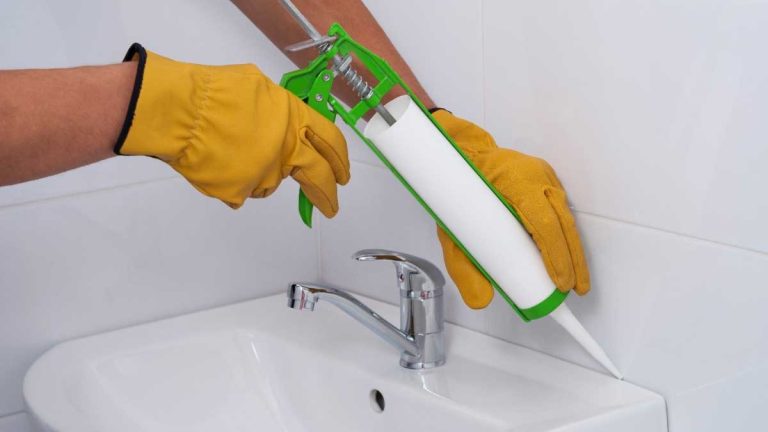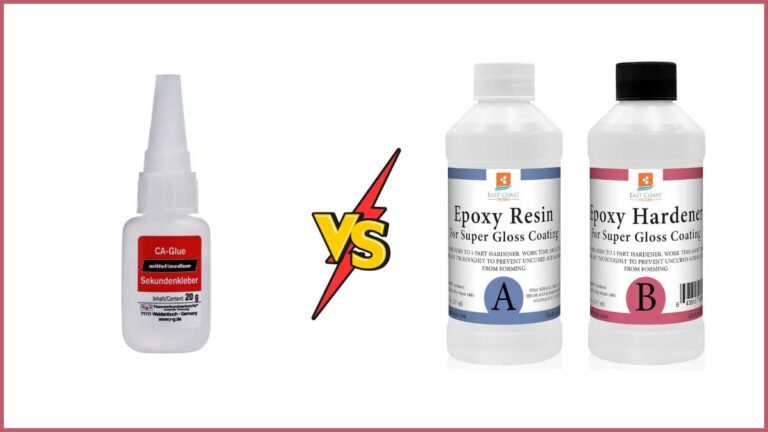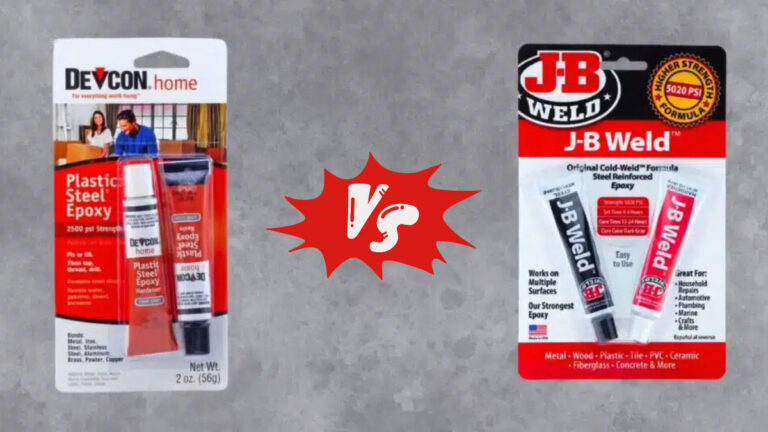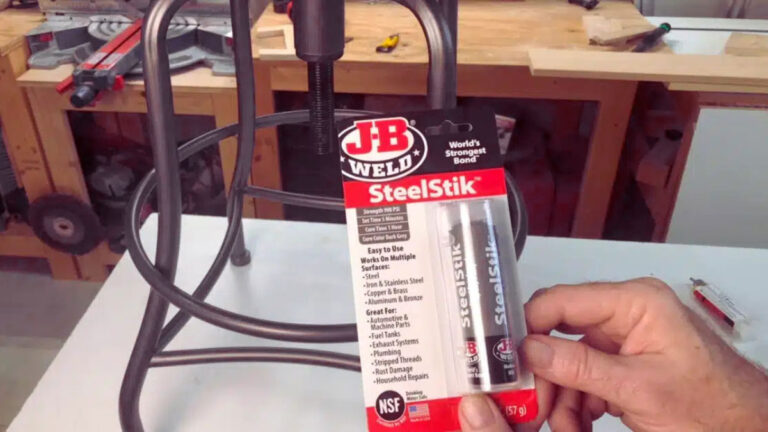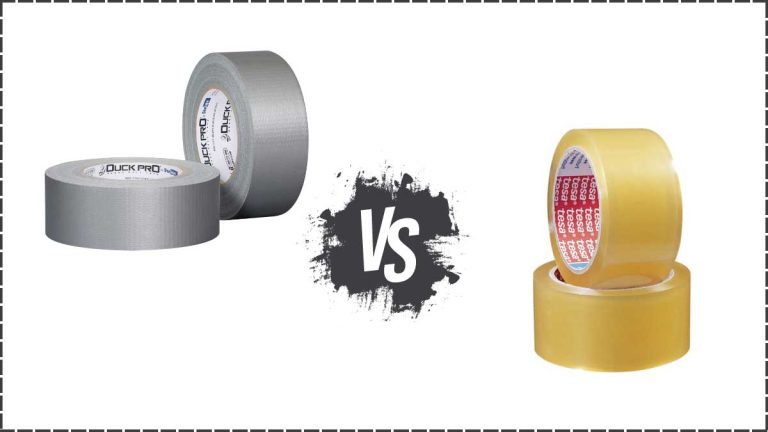Gaffer Tape vs Electrical Tape: Key Differences Explained
When it comes to tackling DIY projects or professional tasks, choosing the right tape can make all the difference. Gaffer tape and electrical tape are two popular options, each with its own set of unique characteristics and uses. Understanding the differences between them will help you select the best one for your needs.
Gaffer tape, often favored in the entertainment industry, boasts a strong hold without leaving residue. Electrical tape, on the other hand, is specifically designed for insulating wires and preventing electrical hazards. Whether you’re securing cables on set or working on home wiring, knowing when to use each type of tape ensures safety and efficiency in your projects.
Key Takeaways
- Material Differences: Gaffer tape is made from a heavy cotton cloth backing, while electrical tape typically uses vinyl or other plastics.
- Adhesive Properties: Gaffer tape features a temporary adhesive that doesn’t leave residue, whereas electrical tape has a stronger, permanent adhesive that can leave residue.
- Heat Resistance: Gaffer tape can resist high temperatures up to 300°F, making it suitable for hot environments, whereas electrical tape can generally handle temperatures up to 176°F.
- Usage Scenarios: Gaffer tape is ideal for temporary applications in entertainment and events, while electrical tape is best for permanent electrical insulation and repairs.
- Flexibility and Strength: Electrical tape is highly flexible and stretches to conform to shapes, perfect for wrapping wires. Gaffer tape is less flexible but easier to tear for quick, precise applications.
- Cost and Versatility: Gaffer tape is more expensive but versatile across various industries, whereas electrical tape is cost-effective and specialized for electrical tasks.
What Is Gaffer Tape?
Gaffer tape is a specialized, matte cloth tape designed for temporary adhesion without leaving residue. It’s versatile, durable, and highly regarded in various industries, particularly the entertainment sector.

Key Characteristics
- Material: Gaffer tape features a durable fabric backing, typically made of cotton, polyester blends, or cotton-poly blends. This material gives it both strength and flexibility.
- Adhesion: The tape grips surfaces tenaciously due to its rubber-based or acrylic adhesive, yet it removes cleanly without leaving a sticky mess. This makes it ideal for applications where residue-free removal is crucial.
- Thickness: Gaffer tape is thicker than standard duct tape, usually two to three times thicker. This thickness allows it to withstand significant pulling force without stretching or compromising adhesion.
- Temperature Resistance: Capable of resisting extreme temperatures up to 300°F, gaffer tape is suitable for use under hot production lights or in high-heat environments without melting.
Usage Applications
- Entertainment Industry: Gaffer tape is a staple in film, theater, and photography for securing cables and props, thanks to its strong hold and clean removal.
- Event Management: Often used to tape down wires and cords in event setups, ensuring both safety and professionalism.
- DIY Projects: Useful for various home and craft projects where temporary adhesion is needed without damaging surfaces.
| Feature | Gaffer Tape | Electrical Tape |
|---|---|---|
| Material | Cloth backing (cotton/polyester blends) | Vinyl or plastic |
| Adhesion | Rubber-based or acrylic adhesive | Rubber-based adhesive |
| Residue Removal | Leaves no residue | May leave residue |
| Thickness | 2-3 times thicker than duct tape | Thinner |
| Temperature Range | Up to 300°F | Generally up to 176°F |
| Use Case | Film, theater, photography, events | Insulating wires, electrical tasks |
By understanding the distinctive properties, you can make informed decisions on when to use gaffer tape versus electrical tape in your projects. The material, adhesion quality, thickness, and temperature resistance play a crucial role in selecting the correct tape for your specific needs.
What Is Electrical Tape?
Electrical tape is specially engineered for various electrical applications, typically constructed from a vinyl or PVC backing paired with an adhesive.
Key Characteristics
- Material and Construction:
- Backing: Electrical tape is crafted from a smooth, vinyl or PVC backing. This material makes the tape thinner and more flexible compared to other types of tape, like gaffer tape.
- Flexibility: Designed to stretch and conform, electrical tape can wrap around cables, connectors, and other irregular shapes, making it ideal for electrical work.
- Adhesive Properties:
- Adhesive Strength: Electrical tape features a strong adhesive, which can leave a sticky residue upon removal. This is particularly true for lower-quality tapes or tapes exposed to heat.
- High-Quality Options: Brands like Scotch Super 33+ produce high-quality electrical tapes that reduce residue but may still leave some adhesive behind.
Common Uses
- Insulating Wires: Electrical tape is primarily used for insulating wires and cables to prevent electrical hazards.
- Bundling Cables: It’s effective for bundling cables together to keep them organized.
- Repairing: Electrical tape can temporarily repair minor damage to cables and wires.
| Feature | Electrical Tape | Gaffer Tape |
|---|---|---|
| Material | Vinyl or PVC backing | Matte cloth backing |
| Adhesive Residue | Strong adhesive, can leave residue | Residue-free removal |
| Flexibility | Highly flexible, conforms to shapes | Limited flexibility, mainly used for flat surfaces |
| Heat Resistance | Moderate, not suitable for extreme temperatures | High, withstands up to 300°F |
| Thickness | Thinner, around one-third of the thickness of gaffer tape | Thicker, durable fabric backing |
To summarize, electrical tape’s design focuses on flexibility and thermal insulation, valuable in electrical tasks. It’s the go-to for insulating wires, bundling cables, and making temporary repairs.
Key Differences Between Gaffer Tape And Electrical Tape
Adhesive Properties
- Gaffer Tape: Gaffer tape uses a strong adhesive that sticks well to various surfaces yet removes cleanly. This is particularly important in applications where temporary adhesion is needed. For instance, securing camera cables during a shoot benefits from its easy removability.
- Electrical Tape: Electrical tape’s adhesive is stronger and stickier, making it ideal for creating durable seals. But, it can leave residue, especially if exposed to heat or left on surfaces too long. This makes it less suitable for temporary applications.
Flexibility And Strength
- Gaffer Tape: Gaffer tape has a lower stretch capacity and doesn’t flex as much due to its cloth backing. It tears easily in both directions, meaning you won’t need scissors. This makes it suited for applications where precise, quick tearing is necessary, like marking stage positions.
- Electrical Tape: Electrical tape is highly flexible and stretches well, perfect for wrapping and sealing. It’s tougher to tear, so scissors are usually required. This makes it fit for tasks requiring tight seals, such as insulating wires.
Residue And Cleanliness
- Gaffer Tape: When removed, gaffer tape typically leaves no residue. This clean removal makes it a favorite in the entertainment industry, where cables need frequent rearrangement without sticky remnants.
- Electrical Tape: Electrical tape can leave a sticky residue, especially under heat. This can complicate cleanup after longer use. Choosing a higher-quality tape can reduce this issue but won’t eliminate it entirely.
Heat And Weather Resistance
- Gaffer Tape: Gaffer tape withstands high temperatures (up to 300°F), making it reliable for various indoor and outdoor tasks. Its fabric material performs well in different weather conditions.
- Electrical Tape: Electrical tape also offers heat resistance but to a lesser extent. It’s designed to endure electrical currents and minor heat, sufficient for short-term outdoor use, but may degrade quicker under extreme conditions.
Typical Uses
- Gaffer Tape:
– Securing cables and props in film and theater
– Event management for safety and organization
– DIY projects requiring clean removal - Electrical Tape:
– Insulating electrical wires
– Bundling cables
– Temporary repairs on wires and cables
| Characteristic | Gaffer Tape | Electrical Tape |
|---|---|---|
| Material | Cloth | Vinyl/PVC |
| Adhesion | Strong, removable | Strong, leaves residue |
| Flexibility | Less flexible | Highly flexible |
| Strength | Easy to tear | Tougher, needs scissors |
| Heat Resistance | Up to 300°F | Moderate |
| Primary Use | Entertainment, events, DIY | Electrical insulation, repairs |
This comparison should help select the right tape for your specific needs, ensuring optimal performance in your work.
Pros And Cons Of Gaffer Tape
Pros of Gaffer Tape
- Removable Adhesive: Gaffer tape is known for its removable adhesive, which doesn’t leave residue on surfaces. Ideal for temporary applications, it won’t damage surfaces upon removal.
- Heat Resistance: More resistant to heat compared to electrical tape, gaffer tape works well in high-temperature environments.
- Easy to Tear: Made from fabric material, gaffer tape can be easily torn by hand, making it convenient for quick applications.
- Non-Reflective: Unlike other tapes, it doesn’t reflect light, making it useful in photography and stage settings.
- Surface Protection: Gentle on surfaces, gaffer tape won’t rip or damage them when removed, useful for delicate or brittle surfaces.
- Higher Cost: Typically more expensive than other types of tape, including electrical tape.
- Limited Electrical Insulation: Not designed for insulating wires, making it unsuitable for electrical applications.
- Lower Adhesive Strength: Has less adhesive strength compared to electrical tape, which may limit its effectiveness in heavy-duty applications.
- Moisture Sensitivity: Less resistant to moisture, making it less suitable for outdoor or wet conditions.
Pros And Cons Of Electrical Tape
Pros
- Durability and Strength: Electrical tape stands out for its toughness and resistance to tearing. This makes it ideal for applications requiring high strength. For instance, it can reliably secure electrical connections.
- Adhesion: Electrical tape has a smoother texture and stronger tackiness than gaffer tape. This superior adhesion benefits tasks requiring a firm hold, such as wire bundling.
- Temperature Resistance: It handles a wide temperature range, though it may not perform optimally in extreme heat conditions. It’s suitable for most indoor electrical applications.
- Cost-Effective: Electrical tape is generally cheaper than gaffer tape, making it a budget-friendly option for various needs. This economic advantage is beneficial for DIY projects and large-scale electrical work.
Cons
- Residue: Electrical tape often leaves a sticky residue when removed. This can be challenging to clean, particularly on delicate surfaces.
- Limited Versatility: Without the reinforced fabric backing found in gaffer tape, electrical tape is less suited for tasks that involve holding or binding heavy items. It’s best used for electrical insulation.
Comparison Table
| Feature | Electrical Tape | Gaffer Tape |
|---|---|---|
| Durability | High resistance to tearing | Moderate resistance due to fabric backing |
| Adhesion | Strong and sticky | Strong but cleanly removable |
| Residue | Leaves sticky residue | Residue-free |
| Temperature Resistance | Handles wide range, limited in extreme heat | High-temperature resistance |
| Cost | Generally cheaper | More expensive |
| Versatility | Limited, ideal for electrical use | Highly versatile for various applications |
Summary
Understanding the pros and cons of electrical tape can help you make informed decisions for your projects. Its durability, strong adhesion, and cost-effectiveness make it suitable for electrical tasks, but residue and limited versatility are drawbacks. Choose the right tape based on your specific requirements to achieve the best results.
How To Choose The Right Tape For Your Needs
Material and Construction
When choosing between gaffer tape and electrical tape, it’s crucial to consider their material and construction:
- Gaffer Tape: Made from heavy cotton cloth with a strong adhesive. It resists heat and won’t leave adhesive residue when removed. Ideal for temporary uses and common in the arts and entertainment industry.
- Electrical Tape: Typically made from vinyl or other plastics. It’s more waterproof and weather-resistant but can leave residue when removed. Suitable for permanent repairs and sealing applications.
Adhesive Properties
Understanding the adhesive properties of each tape helps ensure you choose the right one:
- Gaffer Tape: Features a removable, temporary adhesive that doesn’t harm surfaces. It can be easily torn by hand and is less likely to leave residue, making it suitable for surfaces needing to remain undamaged.
- Electrical Tape: Contains a stronger adhesive that can leave residue. It’s designed for long-term applications, providing a durable seal.
Use Cases and Applications
Both tapes serve specific purposes, and choosing the right one depends on your project needs:
- Temporary Applications: Use gaffer tape for non-damaging, short-term projects.
- Example: Securing cables during events or photo shoots
- Permanent Applications: Electrical tape is better for long-lasting repairs.
- Example: Insulating electrical wires and preventing hazards
Key Differences
To simplify your decision, here’s a detailed table summarizing their differences:
| Feature | Gaffer Tape | Electrical Tape |
|---|---|---|
| Material | Heavy cotton cloth | Vinyl or other plastics |
| Adhesive strength | Temporary, non-residue | Permanent, leaves residue |
| Heat resistance | High | Moderate |
| Weather resistance | Low | High |
| Application type | Temporary | Permanent |
| Industry use | Arts and entertainment | Electrical |
Action Point
Evaluate your project’s requirements in terms of material, adhesive properties, and application type. Choose gaffer tape for temporary, non-damaging applications and electrical tape for permanent, durable repairs.
Conclusion
Choosing between gaffer tape and electrical tape depends on your specific project needs. Gaffer tape excels in temporary applications, offering a strong hold without leaving residue, making it ideal for the entertainment industry and various DIY tasks. On the other hand, electrical tape is designed for electrical insulation, providing durability and flexibility, essential for securing and repairing wires.
By understanding the unique characteristics and pros and cons of each tape, you can make an well-informed choice that ensures both safety and efficiency in your projects. Whether you’re managing cables on a film set or insulating wires at home, selecting the right tape is crucial for optimal performance.
Frequently Asked Questions
Is electrical tape and gaffer tape the same?
No, electrical tape and gaffer tape serve different purposes. Electrical tape is designed for insulating wires and electrical applications, while gaffer tape is used for securing cables and props in the entertainment industry and allows for residue-free removal.
Can gaffer tape be used as electrical tape?
Gaffer tape should not be used for electrical applications. While it might secure cables, it is not designed to withstand voltage or temperatures like electrical tape. Always use electrical tape for electrical projects to ensure safety.
What will gaffer tape stick to?
Gaffer tape sticks to almost any surface, including fabric, without curling or twisting. Its strong adhesive handles various tasks and removes easily without leaving residue. It’s widely used in photography, theater, movie, and television production industries.
How do you remove gaffer tape?
To remove gaffer tape, simply peel it back from the surface. It is designed for easy, residue-free removal, making it ideal for temporary applications where cleaning up sticky residue would be problematic.
What do Americans call gaffer tape?
In America, gaffer tape is commonly known as gaffer’s tape, gaff tape, or spike tape for its narrower, colored variants. It is a vinyl-coated, cloth pressure-sensitive tape known for its flexibility and clean removal.
Is gaffer tape the strongest?
No, duct tape is stronger than gaffer tape. Duct tape is more suited for securing items that could be dangerous if they fell, whereas gaffer tape is preferred for applications requiring clean removal and moderate strength.

